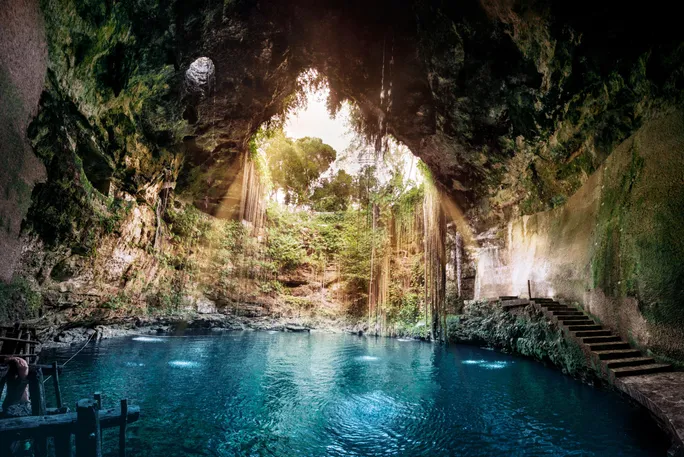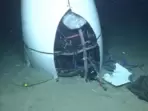Cancun’s Cenotes Register Record-High Contamination Levels
The Mexican state of Quintana Roo’s regional authorities are concerned about the record-high levels of contamination they’ve discovered recently in Cancun area cenotes. Recent routine testing conducted by municipal authorities has revealed that 11 cenotes (roughly 15 percent of those tested) in the state’s northern region now register poor water quality.
A set of geologic phenomena unique to the Yucatan Peninsula, cenotes are a linked system of mineral-rich lagoons that formed over many millennia, freshwater-filled sinkholes fed by the underground rivers that permeate the region’s porous volcanic bedrock. Hundreds of them are scattered throughout the Peninsula’s lush rainforest landscape, drawing tourists from around the world who want to experience their tranquil, otherworldly beauty.
In the northern part of Quintana Roo, where Cancun is located—along with other popular tourism destinations like Costa Mujeres and Puerto Morelos—there are 71 such subterranean and surface-level waterholes, generally prized for their novelty as pristine natural plunge pools.
The Cancun Sun reported on the recent study, overseen by Quintana Roo’s General Directorate of Ecology, which discovered that the most contaminated water was found in Laguna Chacmochuk (a.k.a. Laguna Las Blancas), a significant coastal lagoon located near Costa Mujeres, just off the northern coast of Cancun. The other 10 affected cenotes are situated inside of Cancun city proper.
Officials said the contaminants affecting Chacmochuk and the 10 other Cancun cenotes can be traced to improperly discarded wastewater, which makes its way down through the water. table and into these sensitive lagoons. An abandoned dump site located on Isla Mujeres also produces leachate (hazardous liquid contaminants resulting from the mixture of decomposing garbage with rainwater) that infiltrates groundwater and seeps into nearby surface bodies of water.
Claudia Cecilia Topete Martín, manager at the AyMA Engineering and Environmental Consulting company, disclosed that the major contaminants consist of phosphorus, ammoniacal nitrogen and coliform bacteria—a microbe that comes from human and animal feces.

PHOTO: Cenote Ik Kil, Yucatan. (Photo via Mexico Tourism Board)
Water quality testing of the area’s 71 cenotes was performed routinely during the period from 2020 to 2022, and study sites included the municipalities of Isla Mujeres, Benito Juárez, and Puerto Morelos. No mention has been made about whether or not the cenotes in question are currently closed to visitors, but one of the study’s findings will inform local authorities’ action plan for controlling future water pollution.
Topete Martín presented ideas for some of the most viable solutions against continued water contamination, including:
— Expanding the area covered by the local sewage network
— Ensuring adequate wastewater treatment systems are in operation
— Ensuring proper maintenance of the area’s drainage network, thereby preventing leaks and spillage
— Educating the public about the region’s water quality and proper wastewater disposal
As a result of the study, authorities plan on analyzing 39 local water treatment plants; 63 stations that monitor coastlines, lagoons, cenotes and groundwater; a traffic light system for reporting on water quality; and up to 19 discharge sites to the Nichupté lagoon system.
For the latest travel news, updates and deals, be sure to subscribe to the daily TravelPulse newsletter here.
DestinationsCaribbeanCancunDisclaimer: The copyright of this article belongs to the original author. Reposting this article is solely for the purpose of information dissemination and does not constitute any investment advice. If there is any infringement, please contact us immediately. We will make corrections or deletions as necessary. Thank you.
Title:Cancun’s Cenotes Register Record-High Contamination Levels
Url:https://www.investsfocus.com









